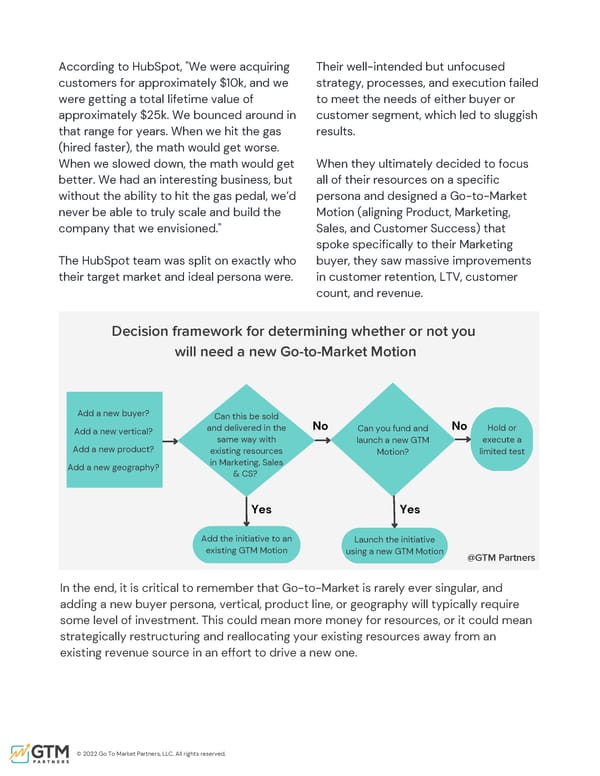According to HubSpot, "We were acquiring Their well-intended but unfocused customers for approximately $10k, and we strategy, processes, and execution failed were getting a total lifetime value of to meet the needs of either buyer or approximately $25k. We bounced around in customer segment, which led to sluggish that range for years. When we hit the gas results. (hired faster), the math would get worse. When we slowed down, the math would get When they ultimately decided to focus better. We had an interesting business, but all of their resources on a specific without the ability to hit the gas pedal, we’d persona and designed a Go-to-Market never be able to truly scale and build the Motion (aligning Product, Marketing, company that we envisioned." Sales, and Customer Success) that spoke specifically to their Marketing The HubSpot team was split on exactly who buyer, they saw massive improvements their target market and ideal persona were. in customer retention, LTV, customer count, and revenue. Decision framework for determining whether or not you will need a new Go-to-Market Motion Add a new buyer? Can this be sold No No and delivered in the Hold or Can you fund and Add a new vertical? same way with execute a launch a new GTM Add a new product? existing resources limited test Motion? in Marketing, Sales Add a new geography? & CS? Yes Yes Add the initiative to an Launch the initiative existing GTM Motion using a new GTM Motion @GTM Partners In the end, it is critical to remember that Go-to-Market is rarely ever singular, and adding a new buyer persona, vertical, product line, or geography will typically require some level of investment. This could mean more money for resources, or it could mean strategically restructuring and reallocating your existing resources away from an existing revenue source in an effort to drive a new one. © 2022 Go To Market Partners, LLC. All rights reserved.
 The Comprehensive Guide to GTM Page 11 Page 13
The Comprehensive Guide to GTM Page 11 Page 13